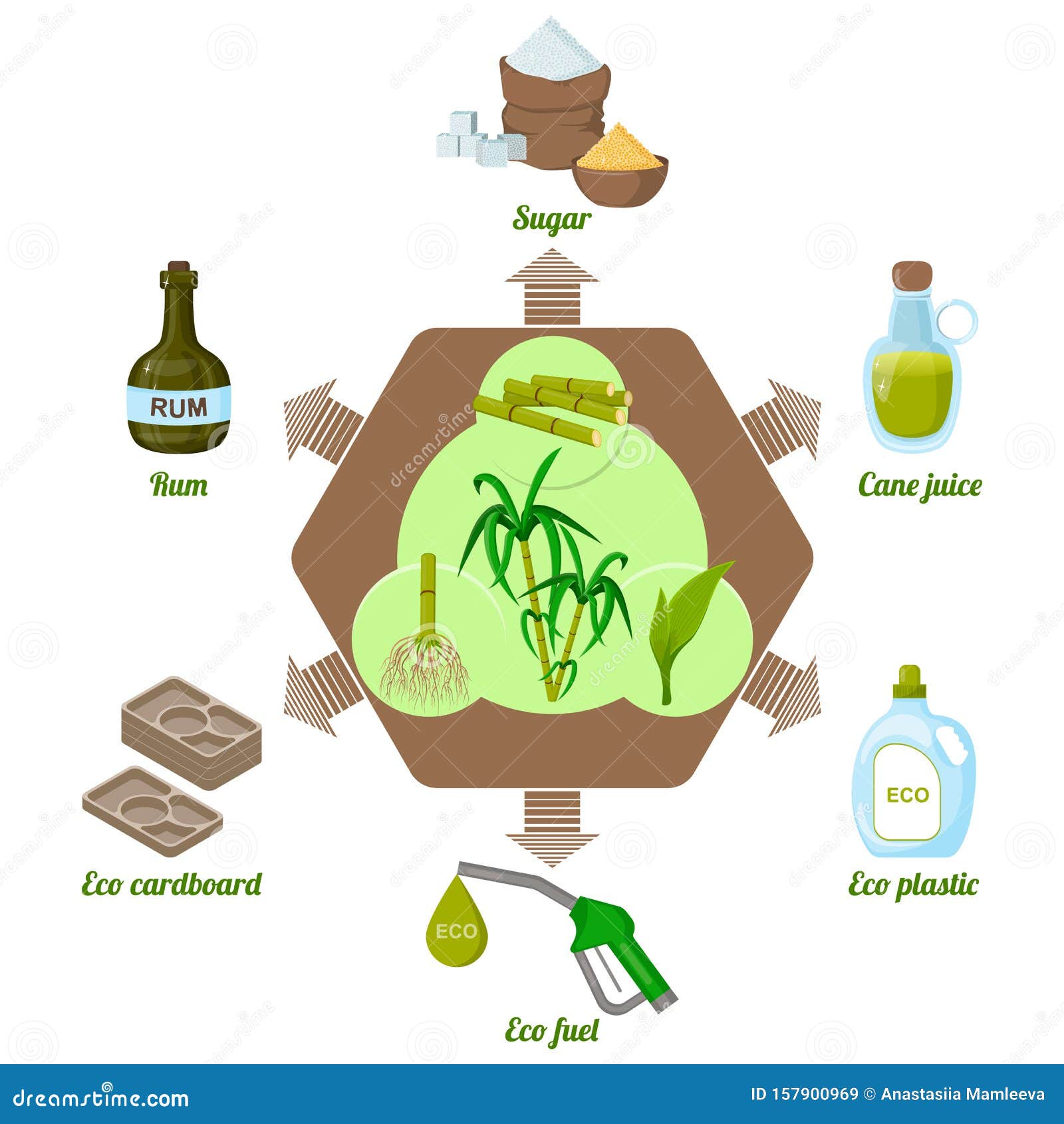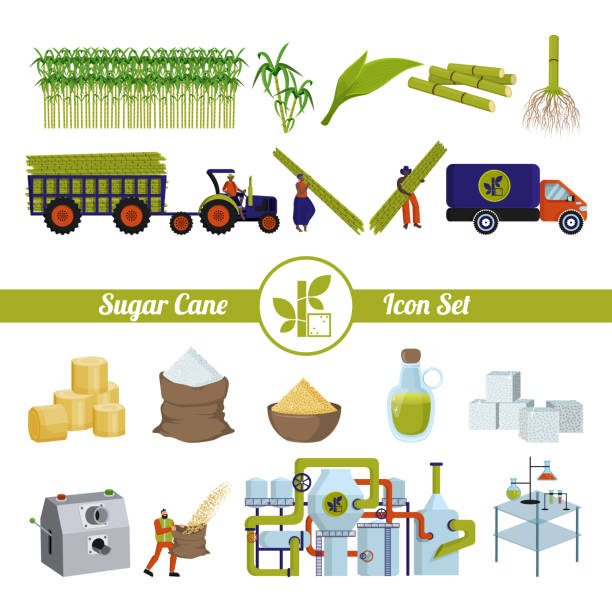A Closer Look at sugar cane products in Nutraceutical Applications
A Deep Study Sugar Cane: Insights on Production, Material, and Item Development
Sugar cane plays a critical function in farming, underpinning economies in tropical areas. Its cultivation involves complex processes influenced by numerous ecological variables. However, farmers deal with considerable difficulties, consisting of environment adjustment and market changes. Technologies in product development are emerging in response to progressing customer demands. Understanding these characteristics is crucial for grasping the future of this essential crop and its influence on international markets. What lies in advance for sugar cane and its myriad applications?
The Significance of Sugar Cane in Global Farming
Sugar cane serves as an important crop in global agriculture, underpinning economic situations and food systems in lots of tropical regions. This flexible plant is largely cultivated for its high sucrose material, which is fine-tuned into sugar, a staple ingredient in many food. Beyond sweetening, sugar cane is additionally crucial for creating biofuels, specifically ethanol, adding to power sustainability.The financial value of sugar cane reaches employment, giving resources for numerous farmers and employees in handling facilities. In several nations, sugar cane growing and processing represent substantial sections of farming GDP, influencing profession equilibriums and regional development.Additionally, sugar cane's flexibility to numerous climates boosts its relevance as a crop, ensuring regular supply in worldwide markets. Its by-products, consisting of molasses and bagasse, further expand its utility, making it an essential part in food, energy, and sector. Overall, sugar cane remains a foundation of farming performance worldwide.
Cultivation Processes: From Growing to Harvest
Cultivating sugar cane entails a collection of distinct processes that guarantee excellent growth and return. The farming begins with land preparation, where the dirt is tilled to protect optimum aeration and water drainage. Following this, seed cane, which includes fully grown stalks, is picked and cut right into sections (sugar cane products). These sectors are then planted in furrows, making certain correct spacing to enable sunshine and nutrient access.Once planted, watering systems are used to maintain appropriate moisture degrees, as sugar cane flourishes in moist conditions. Weeding and bug monitoring are crucial throughout the expanding period to lessen competitors for resources. Nutrient application, including plant foods, sustains robust growth. As the plants grow, keeping an eye on for conditions and pests continues.Harvesting commonly occurs 10 to 24 months post-planting, depending upon the range. The walking canes are reduced close to the ground, ensuring minimal waste, and are swiftly transferred for processing to maintain sugar quality
Geographical Distribution of Sugar Cane Production
The geographic distribution of sugar cane production is largely formed by specific environment and soil requirements. Significant generating nations, such as Brazil, India, and China, advantage from exotic and subtropical environments that sustain the crop's growth. Understanding these variables supplies insight right into the international landscape of sugar cane growing.
Major Making Countries
Although sugar cane is grown in numerous regions worldwide, certain nations dominate production as a result of positive environments and agricultural techniques. Brazil leads the global market, accounting for approximately one-third of complete production, many thanks to its comprehensive vineyards and progressed growing techniques. India follows as a considerable producer, gaining from both beneficial weather conditions and a huge domestic market. China and Thailand also rank amongst the leading producers, with reputable facilities supporting their sugar industries. Various other significant contributors include the USA, Mexico, and Australia, each leveraging their unique agricultural systems to boost outcome. These countries play a crucial function in the sugar cane supply chain, influencing international costs and accessibility
Climate and Dirt Needs
Suitable climate and dirt conditions are essential for successful sugar cane production. Sugar cane grows in tropical and subtropical regions, needing warm temperature levels in between 20 ° C and 30 ° C (68 ° F to 86 ° F) These plants require abundant sunlight and rainfall, ideally between 1,500 to 2,500 millimeters every year, to ensure peak development. The soil ought to go to my site be well-drained, abundant, and abundant in raw material, with a pH degree preferably in between 5.5 and 8.5. Sandy loam or clay loam dirts are specifically favorable to sugar cane farming, giving necessary nutrients and drainage. Geographical distribution is mainly affected by these elements, with significant production locations located in Brazil, India, and China, where environmental problems align with the plant's demands for development and return.

Challenges Faced by Sugar Cane Growers
Sugar cane growers experience significant challenges that influence their source of incomes. Climate adjustment introduces unpredictable weather condition patterns, influencing crop return and quality. Furthermore, market cost volatility produces financial unpredictability, complicating lasting planning for these agricultural producers.
Environment Modification Impacts

Exactly how do climate change impacts impact the practicality of sugar cane cultivation? Climbing temperature levels and erratic climate patterns especially test sugar cane cultivators. Enhanced heat can lead to lowered returns, as the plants struggle to flourish in extreme conditions. In addition, transformed rainfall patterns result in either droughts or extreme flooding, both detrimental to crop health and wellness. Bugs and diseases are likely to proliferate in warmer environments, better harmful production. Dirt degradation and salinization due to climbing sea levels can diminish cultivable land. These weather changes oblige growers to adapt their techniques, often needing financial investment in brand-new technologies and resistant find plant varieties. Ultimately, the sustainability of sugar cane cultivation depends upon resolving these environment tests properly.

Market Rate Volatility
Market value volatility provides substantial difficulties for sugar cane cultivators, impacting their monetary security and planning. Fluctuations in market prices, driven by factors such as international supply and need, weather, and federal government plans, produce unpredictability for producers. This changability makes it challenging for farmers to anticipate profits and manage overhead efficiently. In addition, when costs go down all of a sudden, many farmers may battle to cover production costs, causing potential financial distress. To minimize these risks, some farmers transform to contracts or hedging methods, yet these options might not be accessible to all. As a result, market value volatility continues to be a consistent worry, affecting the general sustainability and profitability of sugar cane farming.
Recognizing the Sugar Cane Supply Chain

Market Trends Influencing Sugar Cane Prices
The dynamics of sugar cane prices are affected by a range of market patterns that reflect wider economic problems and customer habits. Global need for sugar and sugar-related items plays a vital function, with enhancing rate of interest in natural and sustainably sourced items driving rates higher. In addition, changes in oil costs impact the cost of production and transport, more affecting market rates. Weather condition patterns are another substantial variable; unfavorable conditions can result in reduced yields and increased prices. Trade policies, tolls, and worldwide contracts also shape the market landscape, affecting supply chains and schedule. Currency exchange rates can complicate global profession, affecting costs for both merchants and importers. Changes in consumer preferences towards much healthier choices may change demand patterns, creating a ripple result on sugar cane rates. sugar cane products. Comprehending these interconnected patterns is vital for stakeholders in the sugar industry.
Advancements in Sugar Cane Item Growth
Countless advancements in sugar cane product development are improving the industry and expanding its applications. Scientists are checking out different uses past traditional sugar, including biofuels, naturally degradable plastics, and wellness supplements. Advancements in chemical handling techniques have enhanced the removal of useful substances such as antioxidants and vitamins from sugar cane, advertising its usage in practical foods.Additionally, the growth of genetically modified sugar cane varieties aims to boost return and resistance to insects, while additionally enhancing the nutritional account of the plant. Technologies in fermentation processes have actually led to the production of high-grade liquors stemmed from sugar cane, attracting an expanding market for craft spirits.Moreover, lasting techniques in farming and processing are obtaining traction, with a concentrate on lowering environmental influences. These innovations not only produce new market opportunities however also promote an even more sustainable strategy to sugar cane production, lining up with international patterns in the direction of eco-friendly items.
Often Asked Questions
What Are the Ecological Effects of Sugar Cane Farming?
The ecological effects of sugar cane farming consist of logging, Look At This loss of biodiversity, water contamination from plant foods and chemicals, dirt deterioration, and greenhouse gas discharges, all of which greatly contribute to ecological inequalities and climate change.
How Does Sugar Cane Cultivation Affect Resident Economies?
Sugar cane growing considerably influences regional economies by creating jobs, stimulating agricultural sectors, and creating revenue for farmers. It can additionally lead to financial dependency and variations based on market demands and ecological problems.
What Are the Key Vermin and Diseases Affecting Sugar Cane?
The primary parasites affecting sugar cane consist of the sugarcane borer and aphids. Illness such as red rot and smut greatly effect yield. Farmers have to apply incorporated insect management strategies to minimize these threats properly.
How Is Sugar Cane Processed Into Different Products?
Sugar cane handling entails squashing the stalks to extract juice, adhered to by information, dissipation, and formation. This process yields raw sugar, molasses, and ethanol, each serving unique purposes in numerous industries, from food to energy.
What Are the Nutritional Aspects of Sugar Cane?
The dietary facets of sugar cane include essential nutrients, specifically B vitamins, calcium, and iron. It also contains fiber, though mostly made up of sucrose, which supplies power yet does not have substantial nutrients.